| |
 Click to Enlarge
Click to Enlarge
|
Density Ball (LSE)
Our 30-166 density ball is used demonstrate the effects of temperature and mineral content on density. The metal ball will float in cold water, and sink in hot!
The density of water is not constant but depends upon several factors. The effects of salinity and temperature play a large role in the flow of earth's ocean currents. The 30-166 Denstity Ball can be used by varying salt content as well as temperature, to show the effects on density.
See Enlarge
|
|
|
|
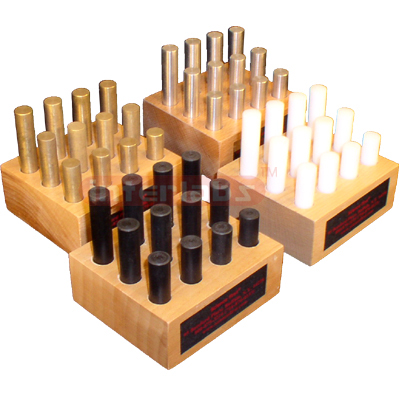 Click to Enlarge
Click to Enlarge
|
Set of 12 each: Al, Brass, PVC, and Tecaform (48 total) (LSE)
These 48 samples of varying lengths from 4 different materials have a lot to tells us about the natural world.
This clever lab is actually four sets of samples, with tweleve (12) pieces in each set, each sample of different lengths. Determine the mass and volume of each sample and then graph mass vs. volume. The slope of the straight line reveals the density of the material! The attractive wood holder allows the teacher to see immediately when all the samples have been returned! Includes 12 each of the following materials: aluminum, brass, PVC and Tecaform for a total of 48 pieces. Set also includes instructions and an attractive wood holder, with linseed coating for protection, holding all the
See Enlarge
|
|
|
|
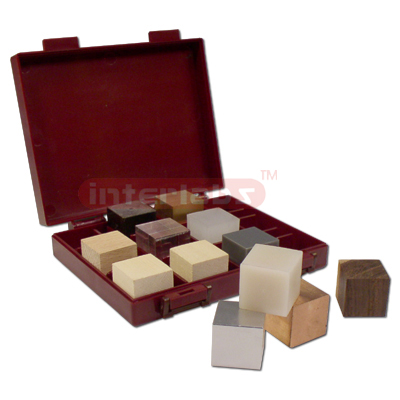 Click to Enlarge
Click to Enlarge
|
Density Cube Sets (LSE)
Here are handy, low-cost sets of one-inch cubes that can be used in many experiments. What makes them unusual? They offer an array of materials we actually use today. Learn about density, mass, volume, buoynacy, specific gravity and flotation while experimenting with real-world building materials. Grades 6-8 and up.
Our Density Cube Sets have long been popular because they meet curriculum standards. At a teacher's suggestion, we've just improved upon our largest set. We've added two new cubes (for a total of twelve): polypropylene and lignum vitae (ironwood).The twelve piece set also includes a handy storage case.
Polypropylene floats in water, although because it is dense plastic, your students would expect it to sink. Lignum Vitae sinks in water, but because it is wood, your students would expect it to float. Lignum Vitae is three times harder than oak. One of the hardest and heaviest woods in the world, it has a specific gravity of 1.05 and a density of 77-82 lbs/ft3. |
| 30-152 Density Cubes Set of 12 includes: Lignum Vitae, Polypropylene, Aluminum, Oak, Steel, Nylon, Brass, Pine, Copper, Poplar, Acrylic, PVC, Instructions, and Storage Case. |
| 30-161 Density Cubes Set of 10 includes: Aluminum, Oak, Steel, Nylon, Brass, Pine, Copper, Poplar, Acrylic, PVC, Instructions. |
| 30-020 Density Cubes Set of 4 with Hooks includes: Aluminum, Steel, Zinc, Brass, Instructions. |
| 30-005 Density Cubes Set of 4 without Hooks includes: Aluminum, Steel, Copper, Brass, Instructions. |
See Enlarge
|
|
|
|
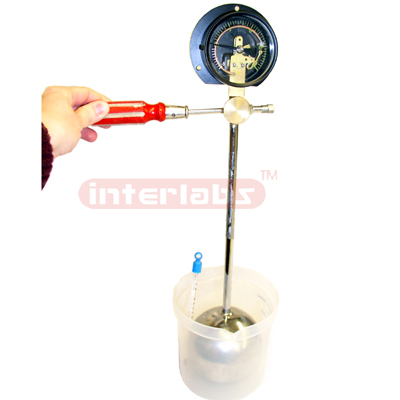 Click to Enlarge
Click to Enlarge
|
Gay-Lussac's Law and Absolute Zero (LSE)
Extrapolate to Absolute Zero using this handy apparatus. The bulb can be submerged in boiling water, ice water, and liquid nitrogen--to give three widely spread points on a temperature versus pressure graph, which can be extrapolated to give an indication of Absolute Zero. Thermometer and beaker not included.
See Enlarge
|
|
|
|
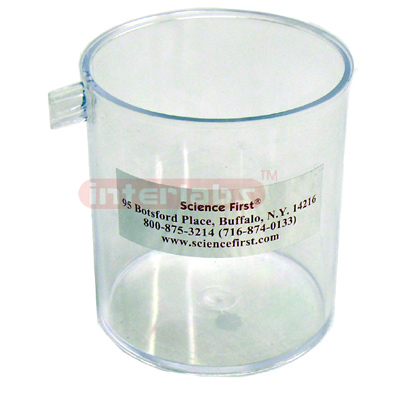 Click to Enlarge
Click to Enlarge
|
Clear Overflow Can (LSE)
Our new 480 mL clear overflow can is a great addition to your lab bench. It is a lightweight, clear plastic displacement vessel with an angled spout to prevent spillback.
It is constructed in one piece to eliminate leakage. This unit is used for accurate measurements of density, specific gravity and volume . It measures 10 cm tall x 9 cm diameter.
See Enlarge
|
|
|
|
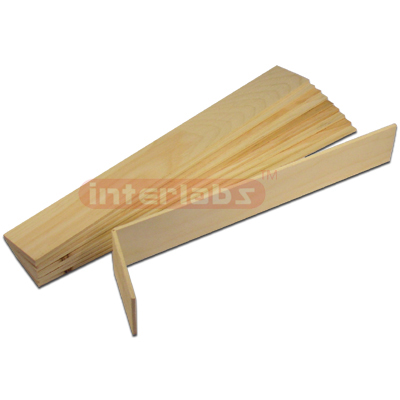 Click to Enlarge
Click to Enlarge
|
Breaking Board Apparatus (LSE)
Don't know your own strength? It's entirely possible. Lay our thin slab of wood on a smooth surface with newsprint over half of it. When you strike the slab, what happens? Due to its large surface area, the inertia of the air is sufficient to hold the board in place. The board breaks rather than sliding away. Includes enough wood for 10 experiments; instructions. You need newsprint.
See Enlarge
|
|
|
|
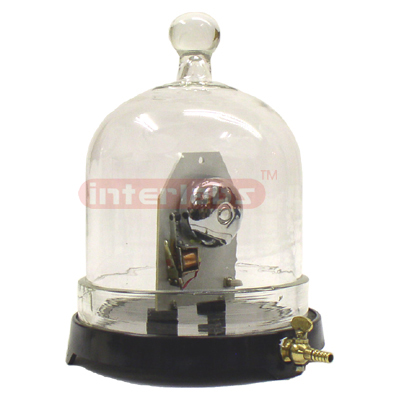 Click to Enlarge
Click to Enlarge
|
Bell in Vacuum (LSE)
Nature, of course, abhors a vacuum - and sound waves won't travel through one. Prove it with a ringing bell inside a sealed glass jar. As air is gradually pumped out of the jar, the bell becomes faint, then dies. Includes jar, vacuum plate with valve, rubber seal, bell system, and instructions. You need a vacuum pump and 2 AA batteries, not included. Bell may be removed for other vacuum experiments. The inside height is 8 inches, and the diameter is 8 inches.
See Enlarge
|
|
|
|
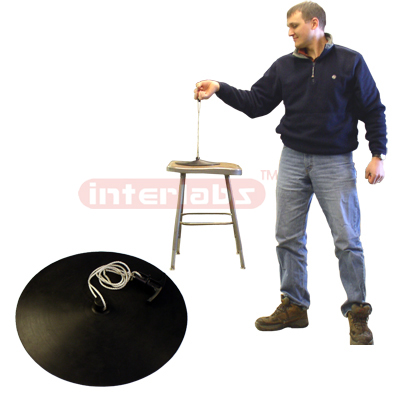 Click to Enlarge
Click to Enlarge
|
Vacuum Lifter (LSE)
Study the effect of air pressure with our 35-165 Vacuum Lifter and lift up to 50lbs!
This 10.5 inch black rubber disk will apear to "adhere" to any flat smooth surface. Place the disc on a table and try to lift it off with the handle, it is almost impossible. Air pressure is approximately 15lbs per square inch, when all of the air is evacuated from under this disc this adds up to 1300lbs of pressure being applied to the Vacuum Lifter! With just a lift of the edge air is allowed under the disc and it will lift off easily.
The 35-165 Vacuum Lifter should not be used to lift more than 50lbs.
See Enlarge
|
|
|
|
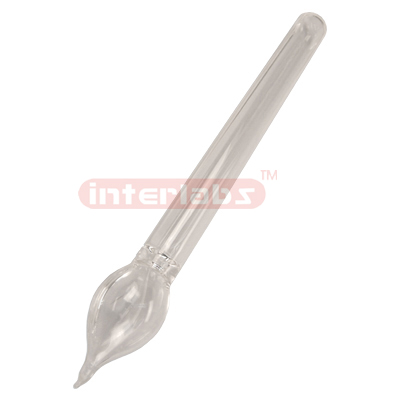 Click to Enlarge
Click to Enlarge
|
Water Hammer (LSE)
The water hammer is a great demonstration of properties of a vacuum. Show how a liquid can act like a solid. Pull the water hammer down about 15cm and you will hear a "clink" sound like a hammer hitting a nail on the head.
See Enlarge
|
|
|
|
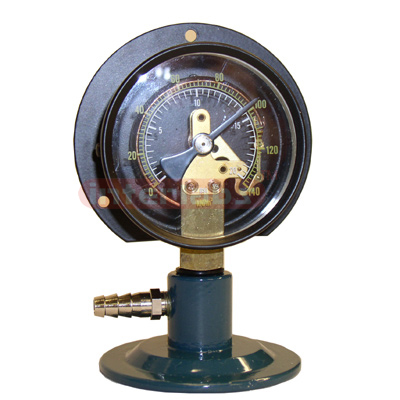 Click to Enlarge
Click to Enlarge
|
Bourdon Gauge (LSE)
The Bourdon Gauge is used for vacuum experiments. It features a 100 mm dial and pressure readings can be taken from 0 - 140 kPa.
See Enlarge
|
|
|
|
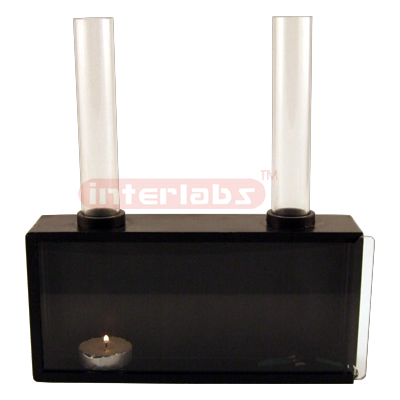 Click to Enlarge
Click to Enlarge
|
Air Convection Kit (LSE)
This metal box houses two plastic candle chimneys. When the candle is lit and placed beneath one of the chimneys, a piece of touch or smoke paper will clearly show convection currents. Air heated by a candle moves up one chimney while cooler air moves down the other chimney to replace the lost air. A transparent front panel allows the entire demonstration to be seen.
See Enlarge
|
|
|
|
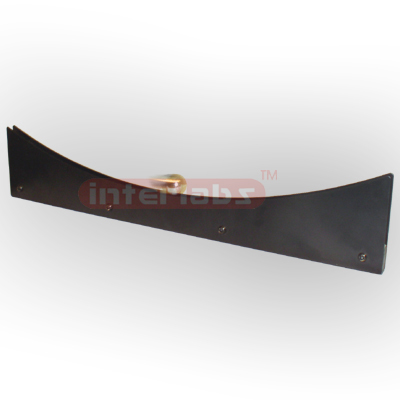 Click to Enlarge
Click to Enlarge
|
Stringless Pendulum (LSE)
The stringless pendulum demonstrates simple harmonic motion in a way that doesn't seem so tied down. Students will see the period of an oscillating body from a different perspective than the standard string and ball. The period of the 1 inch steel ball can be measured, and the distance to a focal point can be calculated to compare the demonstration to a classic pendulum.
Includes pendulum track, 1 inch steel ball, and instructions.
See Enlarge
|
|
|
|
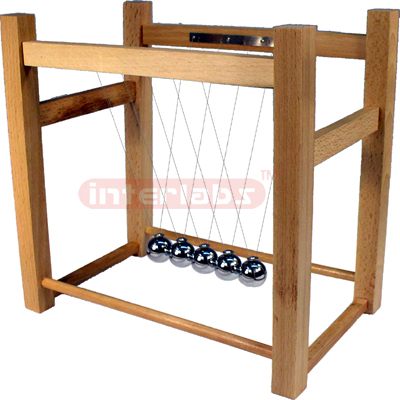 Click to Enlarge
Click to Enlarge
|
Newtonian Demonstrator (LSE)
The classic Newtonian demonstrator is designed with the utmost in Sturdiness and appearance. The wooden frame is 9" X 7" X 8" and can be seen from the back of a classroom. Five nickel plated steel balls of uniform mass are suspended from the frame. The item comes fully assembled and includes instuctions with the theory explained.
See Enlarge
|
|
|
|
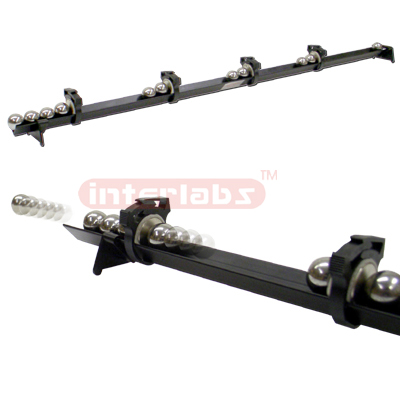 Click to Enlarge
Click to Enlarge
|
Gaussian Linear Accelerator (LSE)
What happens when you align powerful neodymium magnets on a linear rail and arrange steel balls in a sequence? A fun and intriguing demonstration of Newtonian physics. When properly arranged, a slow moving steel ball will be accelerated to 3-4 times its original speed by the pull of magnets and Newton's Third Law of Motion. How is this possible? As a ball approaches the powerful magnet, it is accelerated into that magnet, but on the other side of the magnet there are two balls in a row. The impact of that ball kicks off the farthest ball on the other side just like Newton's Cradle. The released ball however has the energy of the magnetic acceleration propelling it faster than the original ball. This is possible because it begins its journey already a ball away from the original magnet. When this motion happens four times in a row, there is enough velocity built up to shoot a ball across a room!
The 40-165 comes with 4 neodymium magnets, 4 magnet holders which allow the user to move the magnets and reverse their polarity towards one another. Ten 3/4" steel balls, and a low friction track with an open end for launching the balls. This device can be used to teach magnetism, motion, Newton's Laws, and can be used as a fun ball launcher for other experiments and demonstrations.
See Enlarge
|
|
|
|
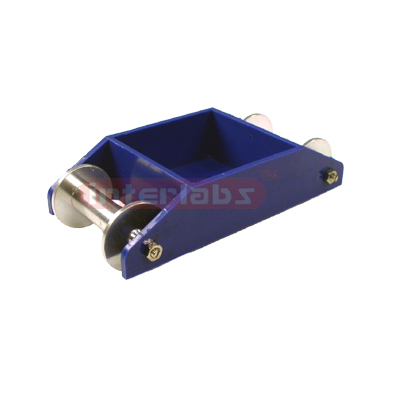 Click to Enlarge
Click to Enlarge
|
Halls Cars, Aluminum Wheels (LSE)
The one-piece aluminum wheels and axles mount in cone bearings for low friction operation. One piece plastic body. You need inclined plane, and weights.
See Enlarge
|
|
|
|
|







